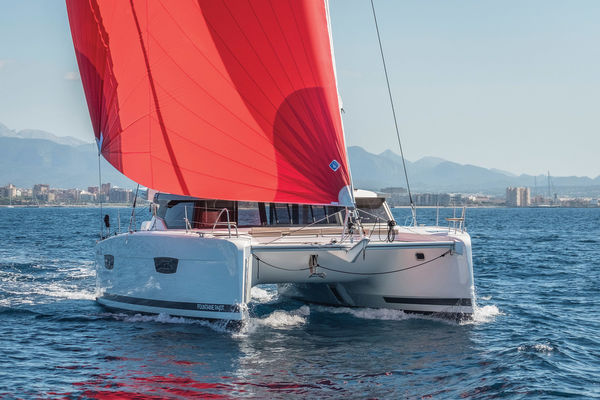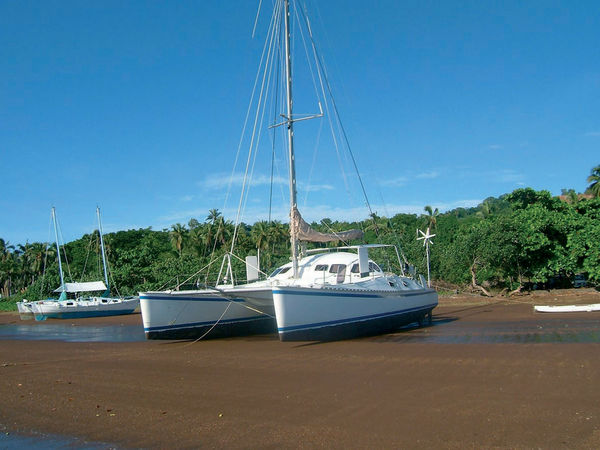
Issue #: 14
Published: August / September 2020
- Price per issue - digital : 7.50€Digital magazine
- Access to Multihulls World digital archives Digital archives
Since the mid-eighties, when the growing development of the multihull fleet started to take off, polyester has reigned supreme in the big production shipyards. But this material has many variations, and above all, it is not the only player in the game. Between monolithic, sandwich, carbon, aluminum, wood, epoxy and many other subtleties in between, we’re taking a look at what constitutes the body of our catamarans and trimarans.
Though polyester has become a common name in the marine industry, it is in fact only the practical diminutive of a composite. If we find it so fantastic, it is because, beyond its interesting technical characteristics, it has above all the good taste of being economical. Indeed, its components - glass fibers and polyester resin from which it takes its name - are very good value for money. What is more, its use in female molds is perfectly suited to mass production: optimized build times, quality of the composite (especially when it is made under vacuum using the so-called infusion technology) and an excellent level of finish, all of which can be duplicated in large numbers. Of course, the initial investment in tooling is significant, but the more boats this tooling produces, the better it will be depreciated. Welcome to the world of industry.

This Astrea 42, like the majority of modern multihulls in series production, is built in polyester sandwich construction.
This raw material - or more precisely monolithic material - has evolved under the influence of ocean racing, in particular to become a “sandwich”. Only the underwater hull is still sometimes made in this form. Its better resistance to puncture is indeed reassuring in the event of going aground or in case of collision with a UFO (unidentified floating object), which is an increasingly frequent occurrence, sadly. Above the waterline, however, sandwich construction has proved its worth, and not only for its insulating qualities, which reduce temperature variations, as well as condensation. In fact, by inserting a core, the strength/weight ratio of the composite is improved. Depending on the area of use, this core can be made of balsa, plywood, felt or foam. Although wood is becoming less and less common, its pressure and shear resistance qualities are still appreciated in highly stressed areas such as the mast foot, winch bases or around the steering wheel axis.

The Gérard Danson-generation Outremers, such as the 38, retained monolithic polyester lower hulls for better puncture resistance and ease of repair.
But the core would be nothing without a structure capable of withstanding the enormous stresses that our multihulls undergo. Let’s not forget that although we’re lucky enough to sail horizontally, the absence of heel deprives us of its damping effect. Fiberglass is gaining a large share of the market in this area, again for economic reasons. Here, depending on the area where it’s used, its presentation and weight per square meter vary to adapt as precisely as possible to the requirements: simple mat in the first layer to give thickness, which can be unidirectional, bidirectional or even tri-directional in areas of high stress such as hull/ nacelle connections, or in heavy weight cloth around the chain plates for the shrouds, for example. On the most high-performance multihulls, fiberglass is increasingly being replaced by carbon fiber, whose strength is 70% to 140% greater ...
What readers think
Post a comment
No comments to show.